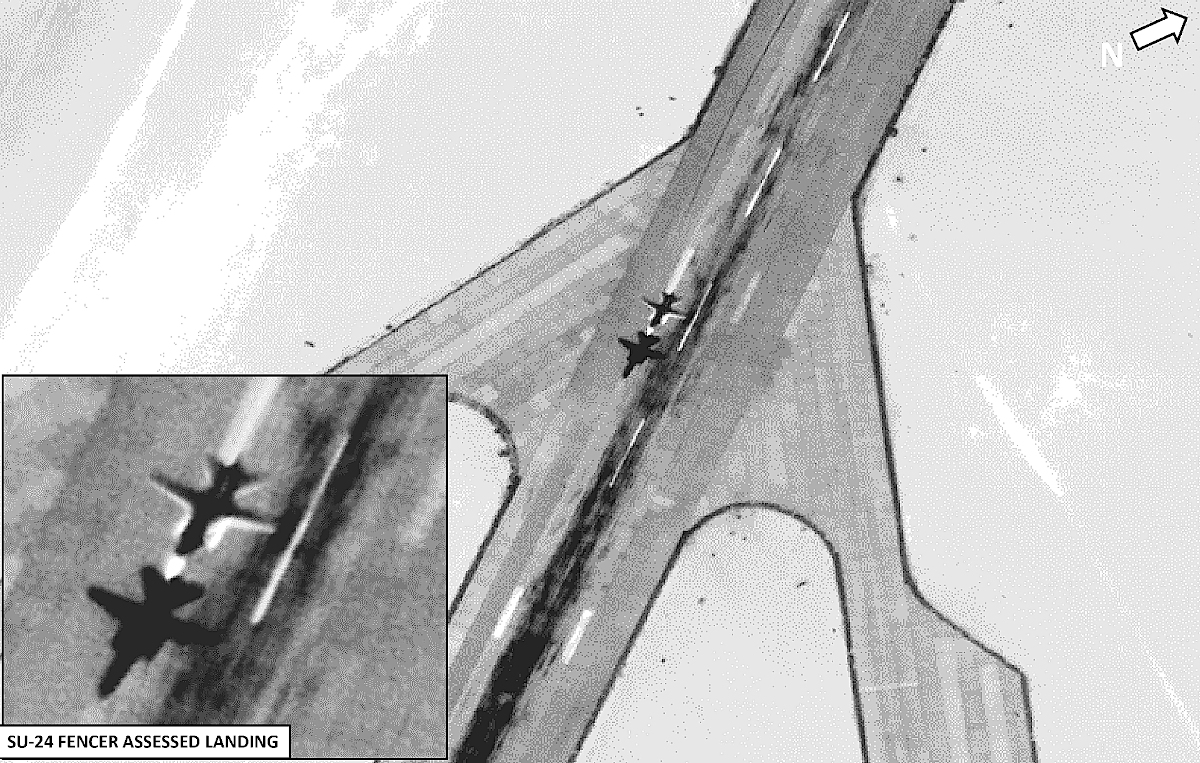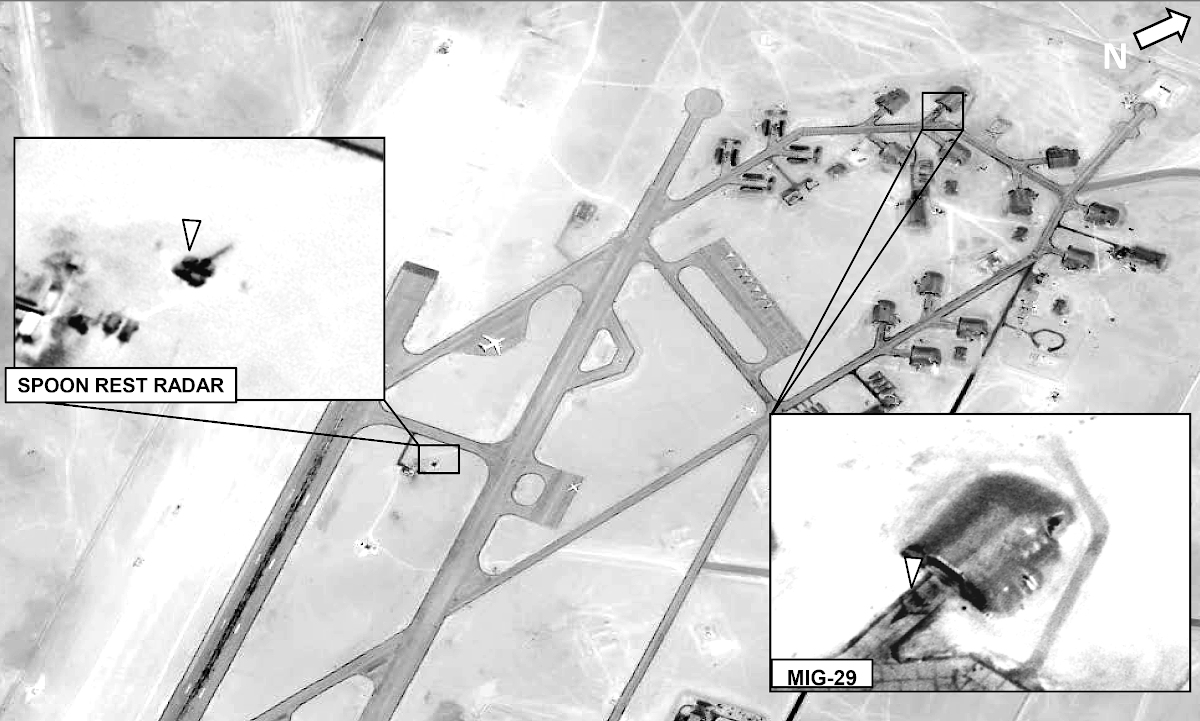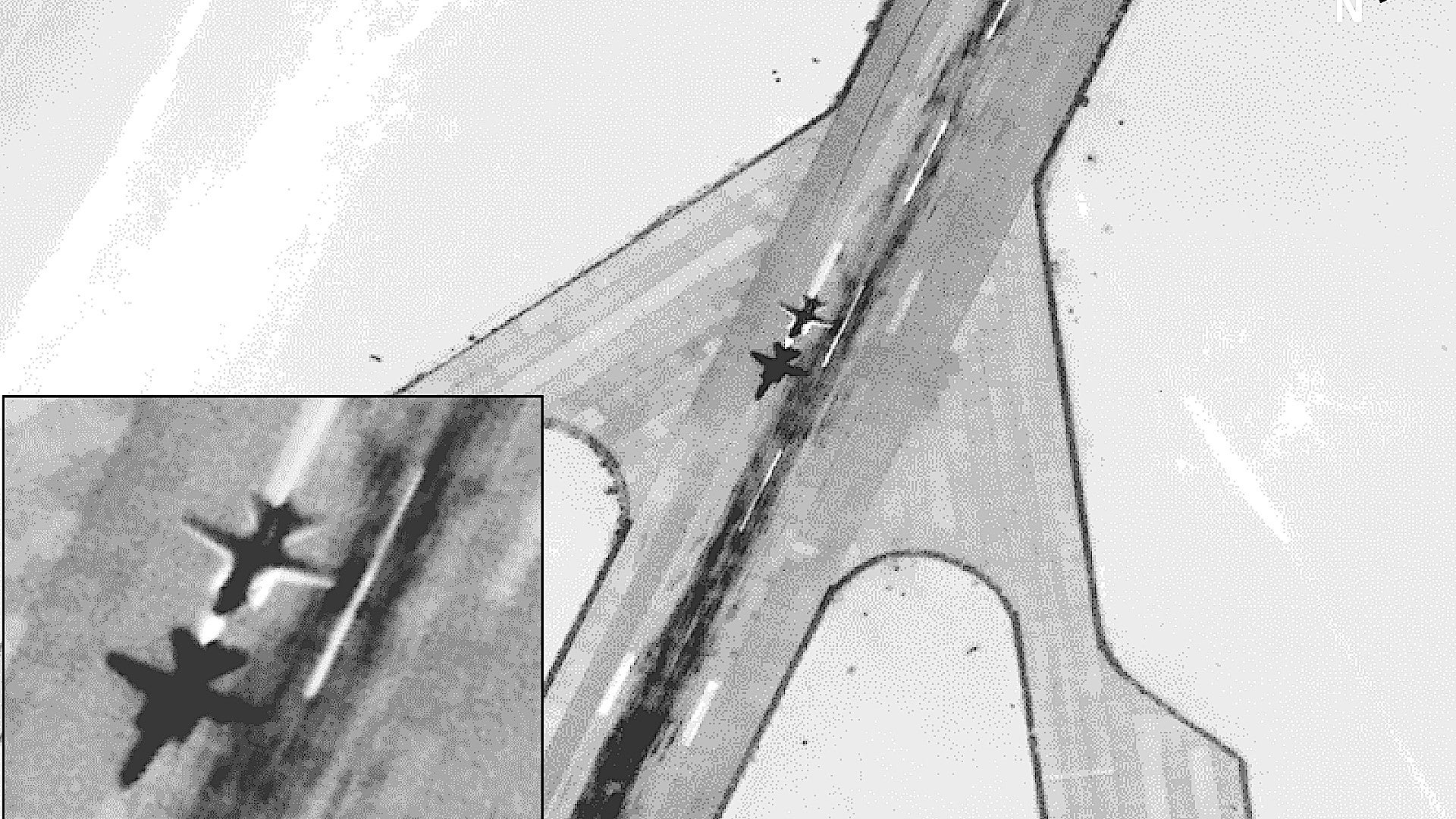New imagery has caught MiG-29 Fulcrums and Su-24 Fencers in the air at Al Jufrah Air Base in Libya. This, along with other details seen in the images, highlight the increasing activity at the base since Russia sent at least 14 combat jets, in total, to the North African country last month to support Libyan strongman Khalifa Haftar. It also underscores that the jets themselves are now actively flying.
U.S. Africa Command (AFRICOM) released two new images of Al Jufrah, which it said were taken on June 18, 2020, one of which showed an Su-24 Fencer taking off from the base. The other one showed a MiG-29 parked in front of a hardened aircraft shelter, as well as P-18 Spoon Rest radar. The P-18 is a long-range surveillance radar that can be used for early warning and to provide general increased situational awareness and air traffic control.


“Russia’s sustained involvement in Libya increases the violence and delays a political solution,” U.S. Marine Corps Brigadier General Bradford Gering, the director of operations at AFRICOM, said in a press release accompanying the images. “Russia continues to push for a strategic foothold on NATO’s southern flank and this is at the expense of innocent Libyan lives.”
On June 17, the Center for Strategic and International Studies (CSIS), a Washington, D.C.-based think tank, released its own analysis of activities at Al Jufrah based on satellite imagery it had obtained from Planet Labs and Maxar Technologies. This includes one shot from Maxar, dated June 8, showing a MiG-29 in flight over the base.
An Su-24 taxing at the base is also seen in that imagery, as well as the arrival of additional personnel in recent weeks. Images dated May 28 also appear to show the presence of a portion of a battery of 130mm howitzers and Pantsir-S1 surface-to-air missile systems.
None of these weapons seemed to be in a deployed state to protect the base, however. Pictures and videos that appeared on social media earlier in May reportedly showed forces aligned with Haftar’s Libyan National Army (LNA), including private military contractors (PMC) with strong ties, if not direct links, to Russia’s intelligence services, fleeing northwestern Libya toward the broader Al Jufrah region. The convoys seen in those photos and video clips contained at least one United Arab Emirates-supplied Pantsir-S1.
LNA forces have lost significant ground in recent months to groups aligned with the United Nations-recognized Government of National Accord (GNA), which is now receiving extensive support from Turkey. Turkish Bayraktar TB2 armed drones have been a particularly important factor in the GNA’s recent routs of the LNA. The LNA has its own foreign backers, including Russia, the UAE, and Egypt.
The GNA is now primarily focused on re-capturing the strategic central coastal city of Sirte from the LNA. Pictures emerged on social media purportedly showing one of the Russian MiG-29s flying near there last week. “A MiG-29 was also photographed operating in the vicinity of the city of Sirte, Libya,” AFRICOM’s statement noted, indicating that these images were indeed legitimate.
“There is concern these Russian aircraft are being flown by inexperienced, non-state PMC mercenaries who will not adhere to international law; namely, they are not bound by the traditional laws of armed conflict,” Brigadier General Gering also said in the press release. “If this is true and bombing occurs, innocent Libyan lives are at risk.”
Both sides in Libya’s civil war have employed mercenaries, especially to operate more advanced systems, including combat aircraft. LNA forces captured an American Air Force veteran after the Mirage F-1 fighter jet he was flying on behalf of the GNA crashed last year.
Regardless of the skill of the pilots flying the Russian jets, there is clearly a concern that the increased use of these combat aircraft in Libya’s civil war could trigger further escalations. On June 11, 17 Turkish military aircraft, including F-16 Viper fighter jets, KC-135R tankers, Peace Eagle airborne early warning and control planes, and other types, together with eight Turkish Navy frigates, conducted a major air-and-sea exercise in the Mediterranean Sea, including off the coast of Libya.

This was seen as a demonstration of the Turkish government’s willingness to intervene more directly in the Libyan conflict. On June 15, Reuters reported that Turkey was considering establishing formal bases in the North African country. Turkish President Recep Tayyip Erdoğan signed a deal last year with GNA Prime Minister Fayez al-Sarraj last year that included, among other things, provisions for sending Turkish forces to Libya.
So far, at least publicly, conventional Turkish military deployments have been largely limited to advisory and other support tasks, such as explosive ordnance disposal work, as seen below. Turkey is also conducting special operations type activities and providing assistance in the operation of the TB2 drones.

The GNA has indicated that it could halt its advances after retaking Sirte, but also appears to have a goal of recapturing more territory in southern Libya, as well. Russia clearly sent the MiG-29s and Su-24s to Libya to reinforce Haftar and now they look set to be an important addition to prevent the LNA from losing any more ground.
However, as these combat jets see more use, the risk of Turkey further increasing its own involvement in the conflict will only grow. Any large conventional Turkish military intervention could completely change the character of Libya’s civil war.
All told, it very much remains to be seen how extensively the LNA will employ the Russian aircraft in the near future.
Contact the author: joe@thedrive.com
